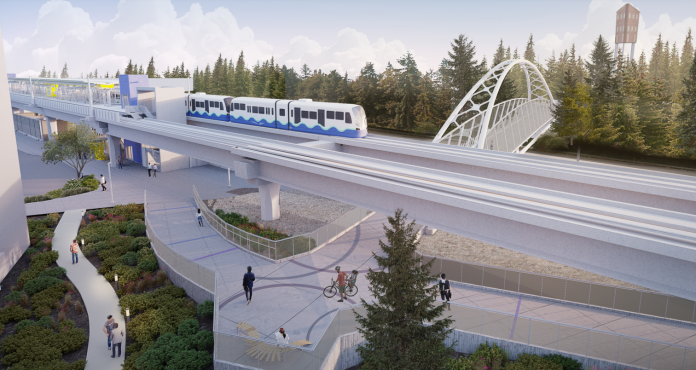
A planned bicycle and pedestrian bridge connecting Sound Transit’s coming light rail station at NE 148th Street in Shoreline with the growing residential district on the other side of I-5 has secured another win in the Federal spending bill signed by President Biden in December. A $4 million allocation to the bridge, thanks to a request made by Representative Pramila Jayapal, will get the project closer to full funding as Shoreline readies to start construction on the first phase of the project this year.
This $4 million joins $7 million set aside in the Move Ahead Washington statewide transportation package this spring and $2.5 million allocated by the Puget Sound Regional Council. But as grants have been secured and outside funding has come in, the project’s costs have also gone up — from $31 million to just under $40 million. That leaves a $8.4 million gap remaining, but a few years left to fill it. To the south, the John Lewis memorial pedestrian and bicycle bridge at Northgate Station, which Seattle opened in 2021, came in at $56 million in total.
The first phase of the project, which is funded, will complete the landing for the bridge on the east side of I-5; work on that would become substantially more complicated once light rail trains started serving the 148th Street light rail station. But Shoreline doesn’t expect to complete the entire project, given the current funding gap, until a year or more after light rail service starts.
Even as the Lynnwood Link extension timeline has been delayed by Sound Transit, with a late 2024 start date now likely, the bicycle and pedestrian bridge is not anticipated to be completed before 2026. This will leave one of the more dense residential districts being developed around a planned light rail station at a considerable disadvantage.
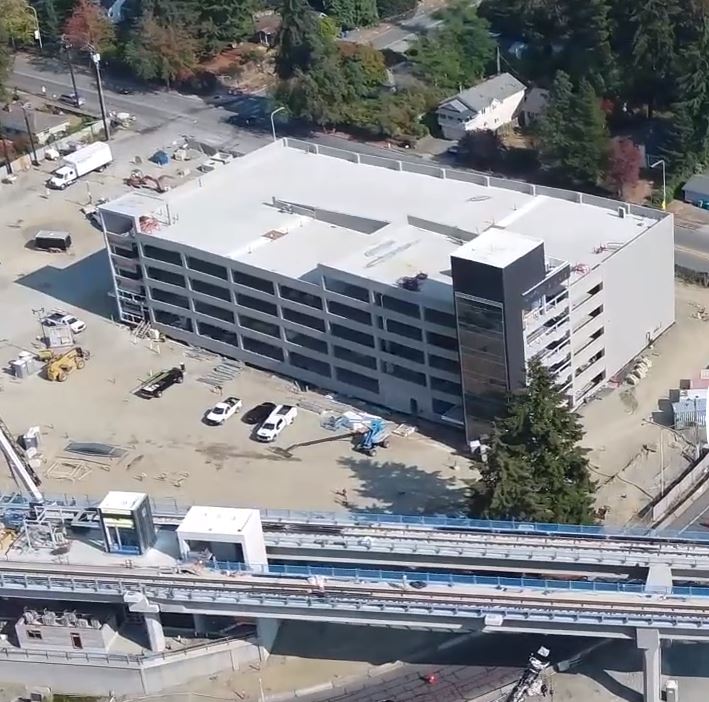
Without the new bridge, riders on the west side of I-5 will have to use NE 145th Street to access the light rail station. 145th Street is a state highway between Aurora Avenue N and Lake City Way, SR 523, and is currently two lanes in each direction with very narrow sidewalks.
“To be able to get access to the light rail station, at this point, you’re taking your life in your own hands, if you want to try and walk down 145th…or ride a bike,” Shoreline Councilmember John Ramsdell told his colleagues at a council meeting late last year.
Shoreline is currently working with the Washington State Department of Transportation with a number of projects on the NE 145th Street corridor, including retrofitting the interchange at I-5 with a set of twin roundabouts at the light rail station’s doorstep, and a widening project for the entire corridor between I-5 and Aurora Avenue N, adding wider sidewalks and a center turn lane to improve vehicle flow, but no dedicated bike facilities.
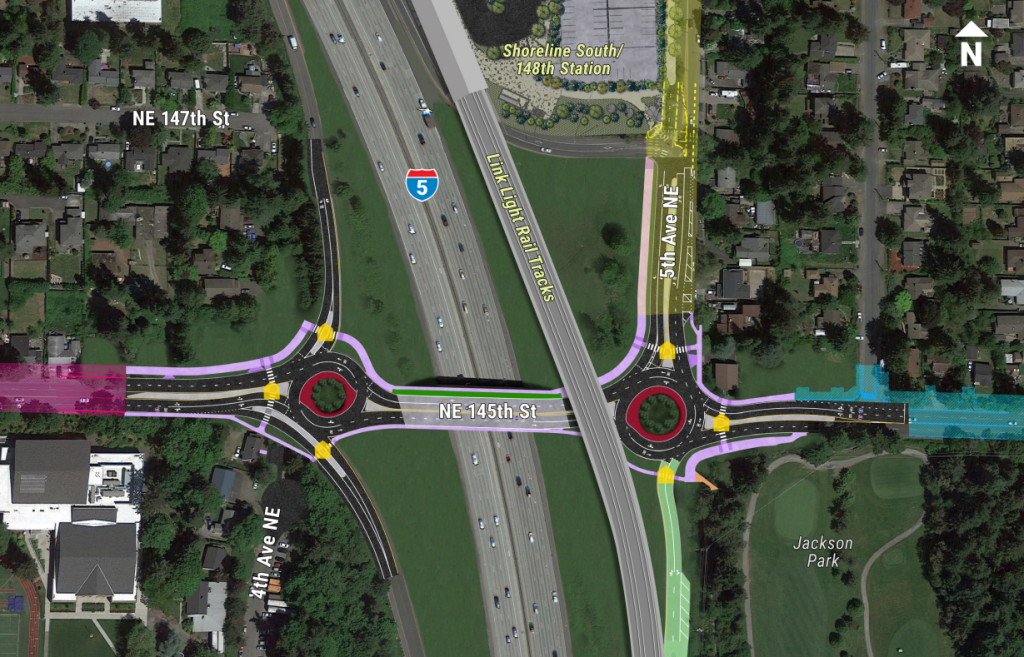
Once it opens, the bridge will be an essential component of Shoreline’s citywide bike network, which the city is reimagining as part of an overhaul of its citywide transportation plan. With 145th Street still proposed to be off the table for safe bike facilities, the proposed network around the light rail station is primarily going to consist of neighborhood greenways, as well as a few painted bike facilities on streets like NE 155th Street, with runs underneath I-5, as well as the twin spines of the Interurban and Burke Gilman trails.
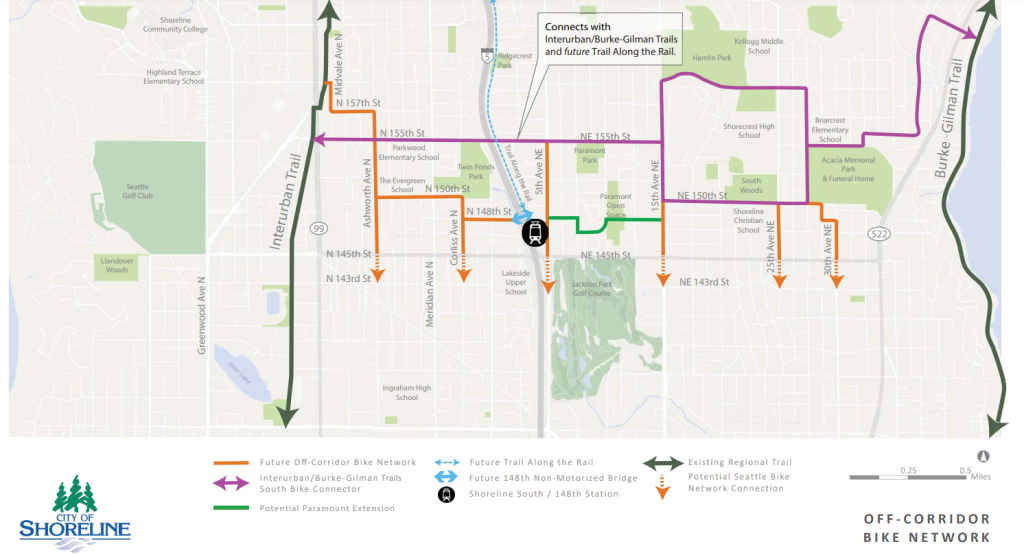
Shoreline is also working on developing a third north-south trail facility, which would run directly alongside the Sound Transit light rail guideway. Trail Along the Rail is ultimately envisioned as connecting all the way from NE 145th Street to the existing pedestrian overpass at NE 195th Street. But until Shoreline is able to acquire property and complete the missing connections along the entire right-of-way, the trail will mainly consist of improvements made by Sound Transit as part of station construction, the equivalent of 20 blocks but non contiguous.
The new connection across I-5 really should be considered essential infrastructure for the light rail station’s operation, perhaps even more so than the 500 stall parking garage Sound Transit is constructing next door. The neighborhoods on either side of I-5 around 148th Street station are set to see significant growth in new housing in the coming years.
When Shoreline city councilmembers toured the area around the station in person last year, the City created a graphic showing housing projects either in construction or in development on either side of I-5, listing a total of 2,987 units planned in the station’s immediate vicinity in the next decade. That growth is the result of years of planning focused on utilizing the land around Shoreline’s two planned light rail stations, with a majority of members of the Shoreline City Council fully prepared to make the argument that encouraging denser housing development is aligned with both the city’s and the state’s climate goals. But of course, if those new residents aren’t able to easily get around without a car, within Shoreline those benefits won’t be fully realized.
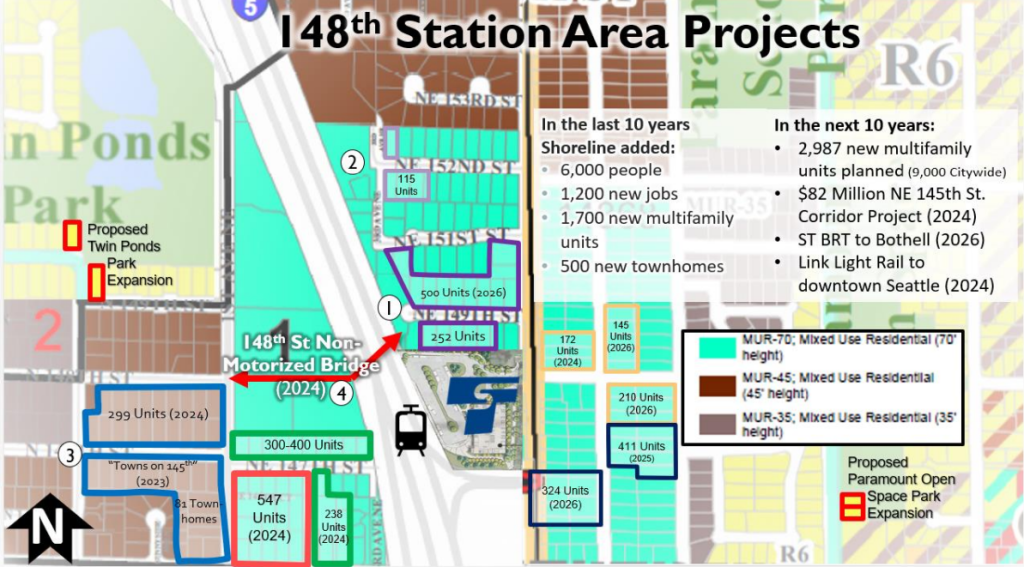
The new federal allocation keeps momentum going toward filling the final funding gap to this needed connection, but continued attention will be needed to ensure that the gap between the start of light rail service and the scheduled opening date of the bridge doesn’t slip any further.
Ryan Packer has been writing for The Urbanist since 2015, and currently reports full-time as Contributing Editor. Their beats are transportation, land use, public space, traffic safety, and obscure community meetings. Packer has also reported for other regional outlets including BikePortland, Seattle Met, and PubliCola. They live in the Capitol Hill neighborhood of Seattle.

